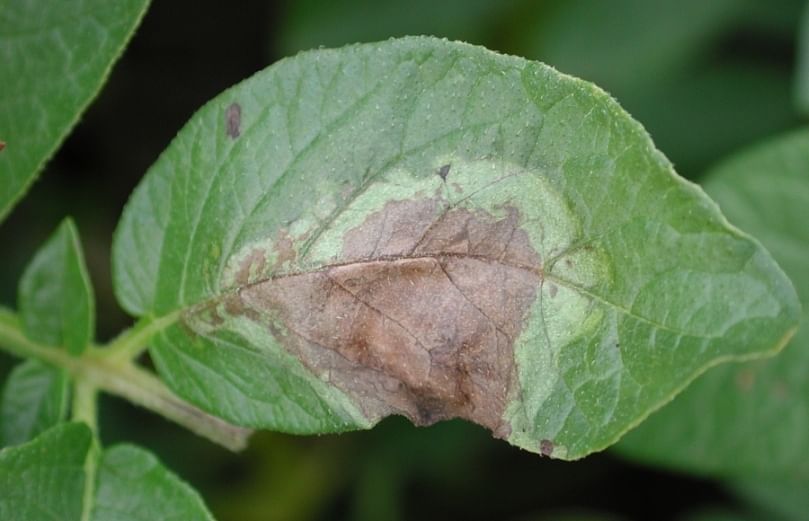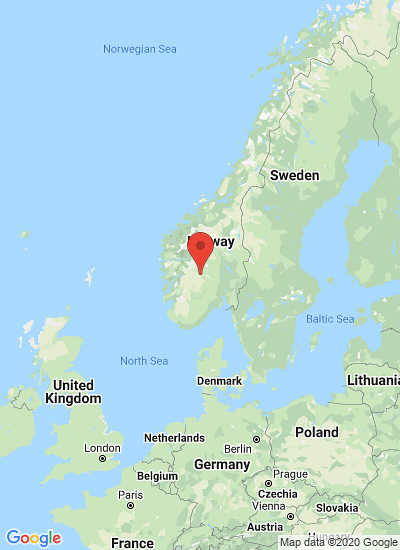A million Irish died during the great famine in the country in the 1840s. The same number emigrated to the USA or other countries. The culprit was potato blight, which still plagues potato farmers today.
The potato disease that changed the world

Potato blight changed Europe and America, and led to widespread deaths and mass emigration. And we’re not rid of it yet. But where did it come from?
Michael David Martin specializes in analyzing genetic material. He works surrounded by envelopes with plants and pictures of speckled leaves that he is studying at NTNU’s University Museum in the Department of Natural History.
In recent years he has been busy finding out more about blight in plants such as potatoes. The disease has caused both famine and waves of human migration. Martin is focusing primarily on researching the origins of blight itself, but this could also have useful side effects.
Michael David Martin, Associate Professor:
“If we can find out where blight originally came from, then we might also be able to find places in Central America or South America with blight resistant potato plants.”Genetic analysis can help scientists learn more about this plant disease, which still affects farmers and potato lovers, though not nearly to the same degree as the first blight outbreak in Europe.
Famine
In 1845, parts of Europe had become dependent on a plant imported from the New World a few centuries before. The Irish especially based their diet largely on potatoes that grew in the barren soil.
As a result, the consequences were devastating when the potato blight infected European crops. The first known outbreak took place on the east coast of the United States in the early 1840s, and from there the blight spread to Belgium and much of Western Europe.

Potato Famine memorial in Dublin
A blight outbreak in a weakened and partly isolated Germany contributed to 700,000 people dying of starvation during World War I. The disease is still wreaking havoc.
Extinct – but not quite
Most farmers are familiar with blight. Researchers calls the disease-causing organism Phytophthora infestans, where Phytophthora simply means “plant killer” and infestans can hardly mean anything nice.
A number of the potato plant samples were quite old. Potato blight has been with us for a very long time. Blight is often described as a fungus, but the name is misleading as it belongs to the scientific class of plants called Oomycetes, or water moulds, a group of a fungus-like microorganisms that have historically been lumped with the Kingdom Fungi, but which actually form a distinct phylogenetic lineage.
The good news is that the blight variant that led to the deaths of so many Europeans in the 1840s may not exist anymore. The bad news is that today’s varieties are far worse than that earlier one, which probably would have done far less harm today.
The race to eradicate
Europeans learned to fight blight by introducing new potato plants from the New World that had greater resistance to the disease. The outbreak actually led to a beginning of selective breeding in order to resist future disease outbreaks.
But blight continues to infect potato crops and their closely related tomato cousins as the disease has evolved apace of the fight to eradicate it.

Late blight (Phytophthora Infestans) lesions on a potato leaf
(Courtesy: Jeff Miller, Miller Research LLC)
Where did blight originate?
Scientists still argue about where blight started.
Michael Martin:
“Most scientists believe blight evolved in the Mexican highlands. Others believe it came from the Andes, in the same area that potatoes originated.”The samples that researchers analysed comprised roughly every available bit of material they could easily find.
The question of where blight actually originated may sound like something that only botanists would be interested in. But it is important to find the answer, for farmers and potato lovers alike.

Suggested paths of migration and diversification of P. infestans lineages HERB-1 and US-1. The 1845–46 blight was caused by the HERB-1 strain of the blight
(Courtesy: Kentaro Yoshida, et. al.)
Crossing these wild potato plants with cultivated plants could then incorporate this resistance into the new hybrid variety. With over 225 different wild species and subspecies of potatoes, it would be quite handy to narrow down the search area a bit. A few years ago some scientists believed they could confirm that blight had originated in Mexico. But it wasn’t that simple.
Analyzed historical samples
Martin analyzed over 70 different historical samples of Phytophthora infestans and of another species called Phytophthora andina with his colleagues at the University of Copenhagen.
The researchers collected the samples from plant collections worldwide, which roughly correspond to all the readily available genetic material of these species. The oldest specimens are 170 years old.
The second species was originally a cross between P. infestans and a third species that no one has yet identified with certainty. P. andina, as the name suggests, exists only in the Andes.
Michael Martin:
“We found four basic gene sequences in P. andina that are a close match to the variant that caused the famine in the 1840s. Our analyses also show that P. andina and the historical variant of P. infestans split into two distinct groups before the modern Mexican varieties developed,” says Martin.In layman’s terms, this means that the disease may have originated in the Andes earlier than variants of the disease evolved in Mexico.
Does that give us a definitive blueprint? No, not really, but it does cast doubt on the idea that Mexico is the site where the disease originated. It also confirms that the evolutionary history of blight is very complex. We need to know more.
And although Martin recently completed his time in Copenhagen, he is continuing his research on blight.
NTNU has awarded Martin a tenure-track position as part of the Onsager Fellowship Programme, which recruits young, outstanding researchers to strengthen the university.








